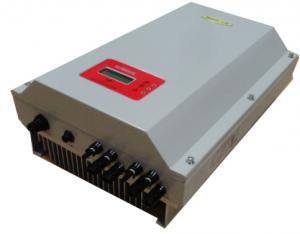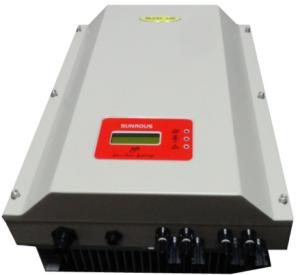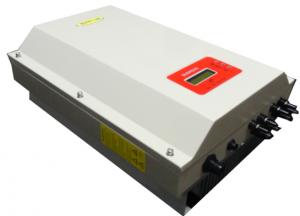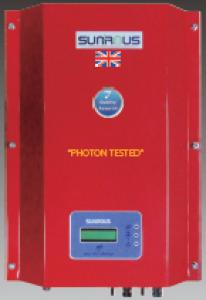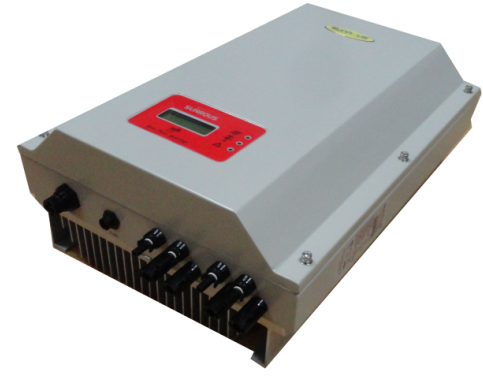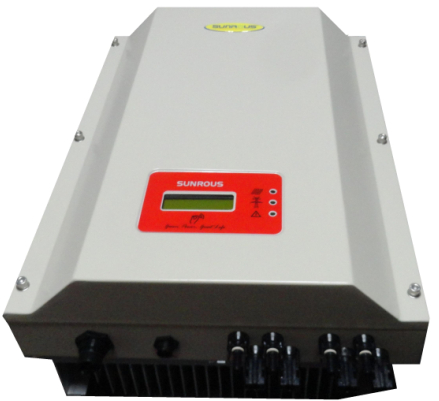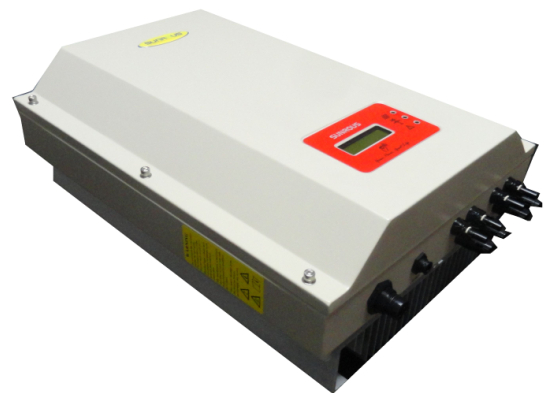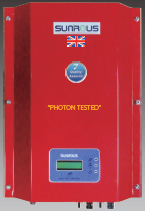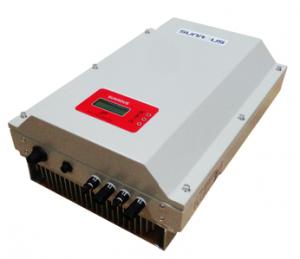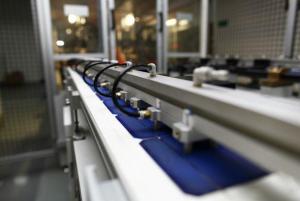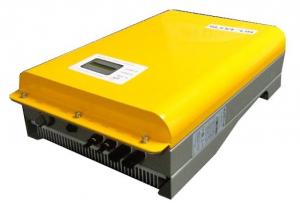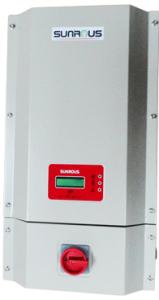India Solar Inverter - Grid-Tied Inverter Dual MPPT Solar Inverter
- Loading Port:
- Shanghai
- Payment Terms:
- TT or LC
- Min Order Qty:
- 20 mm
- Supply Capability:
- 500 mm/month
OKorder Service Pledge
OKorder Financial Service
You Might Also Like
Grid-Tied Inverter Dual MPPT Solar Inverter
·High frequency transformer isolation and conversion efficiency rate up to 97%.
·Dual input sections with independent MPP tracking, allows optimal energy harvesting from two sub-arrays oriented in different directions
· High speed and precise MPPT algorithm for real time power tracking and improved energy harvesting, as well as regular MPP Adaptation Efficiency of over 99.0%.
·Flat efficiency curves ensure high efficiency at all output levels ensuring consistent and stable performance across the entire input voltage and output power range
·Wide input DC MPPT range(150V~550V)/output AC voltage range (180V~264V)
·IP 65/NEMA 3R, outdoor enclosure for unrestricted use under any environmental conditions
·Any modules can be used and fit in this device whether crystalline or thin-film.
·Use in residential applications requiring PV array plug-in grounding.
·RS-485 communication interface (designed for connection to computer or data-logger)
·Easy to install and operate with reduced weight.
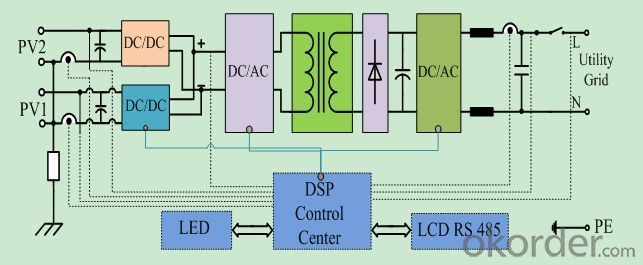
High frequency transformer isolation is the main feature of our production, which makes Installation easier due to the reduced weight and higher conversion effciency because of omitting Low frequency transformer. The wide input voltage range from 180 to 600voltage gives you extraordinary fexibility for you system design. Not need to set graphic display and RS485 communication system make the devices highly user-friendly.
This product can by multi-level parallel combination for 6kw to 20kw needed any power grade HF series technical parameter.
certificates:
American ETL certification
parameters:
GT3.6-ZX-01/HF
Input(DC)
Max.DC Power
3800W
Max.DC Voltage
500V
PV Voltage range, MPPT
60V ~ 360V
Max.input current
30.0A
Number of MPP trackers
2
Max.number of strings (parallel)
4
Output(AC)
Nominal AC power /
Max AC power
3600W/3600W
Max.output current
16.0A
Nominal AC Voltage / range
180V~264V
AC grid frequency / range
47.5-51.5Hz / 59.3-60.5Hz
Power factor at rated power
1
THD
< 3%
AC connection
Single-phase
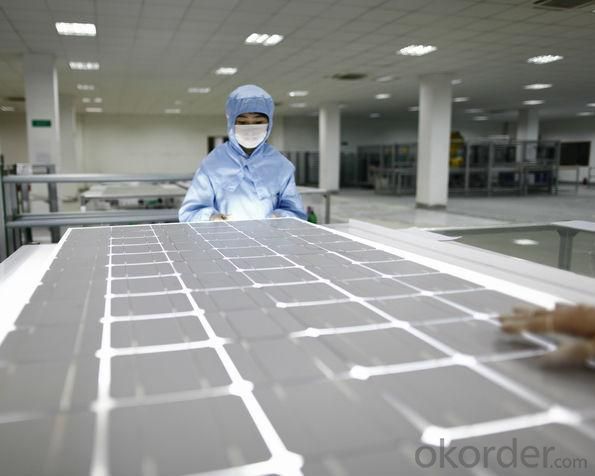
- Q: Can a solar inverter be connected to the grid?
- Yes, a solar inverter can be connected to the grid. In fact, this is one of the main purposes of a solar inverter – to convert the direct current (DC) electricity generated by solar panels into alternating current (AC) electricity that can be used in homes and businesses or fed back into the grid. Connecting a solar inverter to the grid allows for the utilization of solar energy while also providing the opportunity to sell excess power back to the grid, contributing to renewable energy generation and potentially offsetting electricity costs.
- Q: How do you calculate the efficiency of a solar inverter?
- The efficiency of a solar inverter can be calculated by dividing the output power of the inverter by the input power it receives from the solar panels. This ratio is then multiplied by 100 to express the efficiency as a percentage.
- Q: How do you calculate the payback period for a solar inverter?
- To calculate the payback period for a solar inverter, you need to determine the initial cost of the inverter and the annual savings or earnings it generates. Divide the initial cost by the annual savings or earnings to determine the number of years it will take to recoup the investment. This will give you the payback period for the solar inverter.
- Q: How does a solar inverter protect against lightning strikes?
- A solar inverter typically protects against lightning strikes by incorporating surge protection devices and grounding systems. These features help to divert the excess energy caused by a lightning strike away from the sensitive electronic components of the inverter, preventing damage and potential electrical hazards.
- Q: What is the function of a solar inverter in a solar power system?
- The function of a solar inverter in a solar power system is to convert the direct current (DC) electricity generated by the solar panels into alternating current (AC) electricity that can be used to power household appliances and feed into the electrical grid.
- Q: How do you calculate the power loss in a solar inverter?
- To calculate the power loss in a solar inverter, you need to determine the difference between the input power and the output power. Subtracting the output power from the input power will give you the power loss.
- Q: Can a solar inverter be used in areas with unstable grid connections?
- Yes, a solar inverter can be used in areas with unstable grid connections. Solar inverters are designed to handle fluctuations and interruptions in the grid power supply. They typically have built-in features such as anti-islanding protection and grid support functionalities that ensure safe operation even in areas with unreliable grid connections. These inverters can switch seamlessly between grid power and solar power, providing a consistent power supply to the connected loads in such areas.
- Q: How does a solar inverter affect the overall system efficiency at different temperatures?
- A solar inverter can affect the overall system efficiency at different temperatures by adjusting its power conversion efficiency based on the temperature conditions. In hot temperatures, solar inverters can experience lower conversion efficiencies, resulting in decreased overall system efficiency. This is due to increased internal resistance and heat losses in the inverter components. On the other hand, in colder temperatures, the inverter can operate more efficiently, as lower temperatures generally lead to reduced internal losses and improved performance. Therefore, the temperature conditions can have an impact on the efficiency of a solar inverter and subsequently affect the overall system efficiency.
- Q: How does a solar inverter handle electromagnetic interference?
- A solar inverter handles electromagnetic interference (EMI) by incorporating various measures to reduce and mitigate its impact. These measures include using shielding materials, implementing proper grounding techniques, and utilizing filters to suppress EMI. Additionally, advanced inverters may employ digital signal processing techniques to minimize the effects of EMI on the solar power system.
- Q: Can a solar inverter be used in areas with unstable grid power?
- Yes, a solar inverter can be used in areas with unstable grid power. In fact, solar inverters are often used in such areas to provide a stable and reliable power supply. The inverter's ability to convert solar energy into usable electricity allows it to function independently of the grid power, ensuring a continuous power supply even during grid outages or fluctuations.
Send your message to us
India Solar Inverter - Grid-Tied Inverter Dual MPPT Solar Inverter
- Loading Port:
- Shanghai
- Payment Terms:
- TT or LC
- Min Order Qty:
- 20 mm
- Supply Capability:
- 500 mm/month
OKorder Service Pledge
OKorder Financial Service
Similar products
Hot products
Hot Searches
Related keywords
